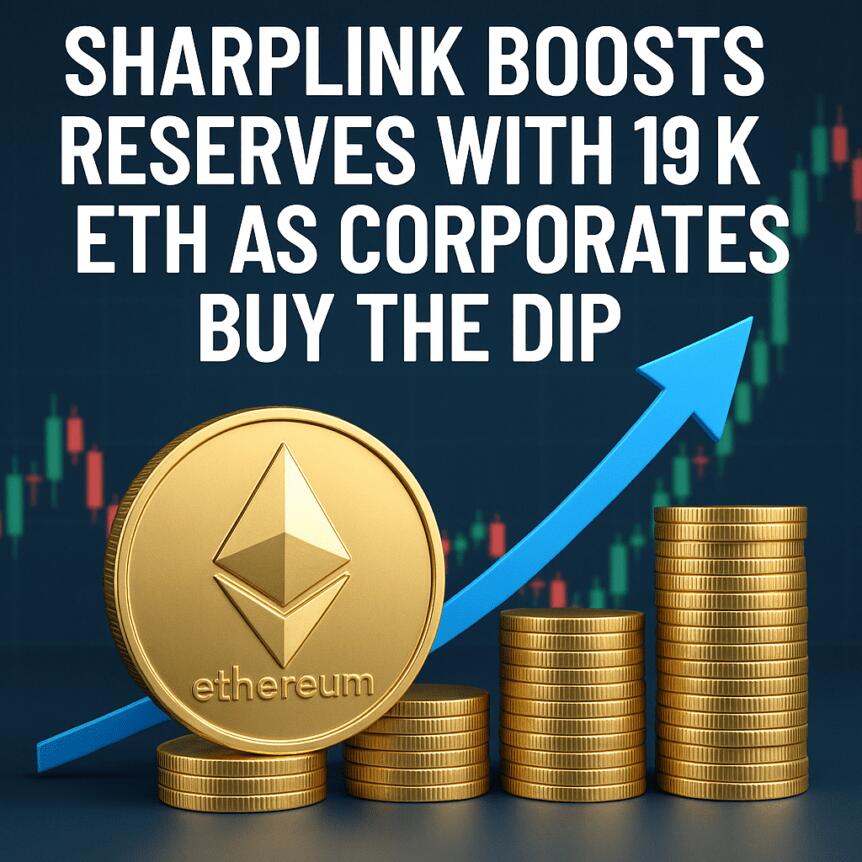How Argentum AI Plans to Make GPU Access as Liquid as Capital Markets
\ Argentum AI, a Menlo Park startup, is betting that the answer could reshape how enterprises access GPU resources. On October 21, the company announced a marketplace platform that trains its AI system on real human auction behavior, creating what CEO Andrew Sobko calls a "living benchmark" for the compute economy.
\ The timing matters. The global GPU market is projected to reach $811.6 billion by 2035, growing at 41.39% annually from a 2025 baseline of $25.41 billion. Yet despite this expansion, access remains concentrated. Hyperscalers control pricing and availability, while decentralized compute platforms have grown 86% in blockchain activity year over year, signaling demand for alternatives. Argentum enters this landscape with a different thesis: markets, not algorithms alone, should determine compute allocation.
\ The concept raises immediate questions. Can human trading patterns improve AI decision-making more than pure optimization? Will enterprises trust an advisory system over autonomous pricing? And can a marketplace trained on behavior remain transparent when behavioral signals grow more complex?
\
What Makes a "Living Benchmark" Different
\ Argentum processes two data streams to train its AI system. First, verified on-chain market activity including postings, bids, cancellations, escrow, and payouts. Second, cryptographically signed execution telemetry from compute nodes reporting runtime, efficiency, and energy consumption. Together, these inputs create a feedback loop where the AI learns from what actually happened rather than what should theoretically happen.
\ The distinction matters in compute markets. Traditional optimization models predict demand curves and set prices based on historical patterns. Argentum's approach tracks order book depth, bid acceptance ratios, and staking behavior to evaluate trust and reliability in real time. The system then suggests bidding strategies, reserve price levels, and workload routing across different compute environments. Each recommendation comes with a rationale and confidence indicator.
\ Behavioral learning introduces complexity. Markets evolve as participants learn from each other and from the AI's suggestions. This creates recursive feedback loops where today's trading patterns influence tomorrow's recommendations, which then shape future behavior. The platform claims this adaptation strengthens decision-making over time, but it also means the AI's training data is constantly shifting. Whether this produces stability or amplification remains to be tested at scale.
\
The Human Approval Layer: Necessity or Bottleneck
\ Every Argentum recommendation requires human approval before execution. Unlike autonomous trading systems that act on signals instantly, Argentum positions itself strictly as advisory. Users review suggestions, see the underlying reasoning, and decide whether to proceed. This preserves human control but introduces latency into time-sensitive compute auctions.
\ The human-in-the-loop approach has proven effective in other domains. Companies report accuracy improvements of 25 to 40% when combining AI capabilities with human oversight compared to fully automated systems. In healthcare, hybrid systems outperform both human doctors and machine learning models alone when identifying conditions like breast cancer. The same logic applies to compute markets where nuance matters and mistakes carry cost.
\ The tradeoff is speed versus judgment. GPU spot markets already see providers like Thunder Compute advertising A100s at $0.66 per hour, undercutting hyperscalers by up to 80%. In such competitive environments, delays of even minutes can mean lost opportunities. Argentum's model assumes that better decisions justify slightly slower execution. Whether enterprises accept this tradeoff depends on their workload sensitivity and risk tolerance.
\
Transparency Through Cryptography, Not Just Claims
\ Argentum enforces transparency through cryptographically signed execution proofs and redundant verification runs. This allows participants to trace which data trained the AI and how specific recommendations were generated. The company commits to open metrics, auditable processes, and community-based governance using quadratic voting and reputation-weighted oversight.
\ Transparency becomes critical when behavioral data drives decisions. If the AI learns from trading patterns, participants need to verify that no single actor can manipulate those patterns to bias recommendations. Cryptographic proofs provide this assurance by creating an immutable record of what happened, when, and under what conditions. Redundant verification runs cross-check results to catch discrepancies before they propagate through the system.
\ This approach contrasts with opaque optimization models where enterprises trust the provider's claims about fairness and accuracy. Blockchain-based verification adds overhead but removes single points of trust. The decentralized AI compute market, now valued at $12.2 billion in 2024 and expected to reach $39.5 billion by 2033, has grown precisely because enterprises want alternatives to centralized control. Argentum's cryptographic layer addresses this demand while maintaining the efficiency gains of centralized compute pools.
\
Market Context: Where Argentum Fits in the Compute Landscape
\ The GPU as a Service market was valued at $3.23 billion in 2023 and is projected to reach $49.84 billion by 2032, exhibiting a 35.8% growth rate. North America dominates with 39.63% market share, driven by established providers and heavy AI adoption. Yet this growth masks structural problems: supply constraints for HBM3E memory, fully booked production lines through 2025, and vendor lock-in that limits flexibility.
\ Decentralized platforms emerged as a response. Akash Network connects providers with consumers in a peer-to-peer marketplace, reducing costs by up to 80% compared to traditional cloud. Golem Network allows users to share unused computing power without relying on centralized entities. These platforms demonstrate demand for alternatives but face their own challenges: fragmented liquidity, inconsistent quality, and limited enterprise adoption due to perceived reliability risks.
\ Argentum positions itself between hyperscalers and fully decentralized networks. It creates a spot market for GPU workloads with transparent pricing and verifiable execution, but adds a behavioral learning layer that traditional decentralized platforms lack. The AI learns from aggregate market activity to suggest better strategies, theoretically improving outcomes for all participants. Whether this hybrid approach gains traction depends on execution quality and whether enterprises see enough benefit to switch from established providers.
\
Technical Implementation and What It Means for Users
\ The platform measures effectiveness through real performance outcomes: reduced pricing inefficiency, higher task completion rates, and lower average GPU hour costs. These metrics tie directly to financial impact, which matters for enterprises evaluating whether to adopt a new marketplace. The "living benchmark" concept means each verified transaction compounds the AI's learning, refining future recommendations.
\ This creates a network effect where more participants generate better data, which produces more accurate suggestions, which attracts more participants. The challenge is reaching critical mass. Early users effectively train the system with their behavior, but may not see immediate benefits if the dataset remains small. Argentum needs sufficient volume to generate statistically meaningful patterns before recommendations become reliably useful.
\ The company claims each suggestion is accompanied by a rationale and confidence indicators. This matters for debugging and trust. If a recommendation fails, users can trace back through the reasoning to understand why. Over time, patterns emerge showing which strategies work in which conditions. This knowledge becomes institutionalized in the AI's training, creating a shared resource that benefits all marketplace participants.
\
Competitive Dynamics and Market Positioning
\ Andrew Sobko explains the company's vision:
\
\ The capital markets analogy matters. Financial markets achieved liquidity through standardization, transparency, and behavioral learning over decades. Can compute markets follow the same path in compressed timeframes?
\ The answer depends partly on whether behavioral learning proves more effective than pure optimization. Recent research suggests hybrid approaches outperform either humans or machines alone in complex decision environments. But compute markets have unique characteristics: highly variable workloads, rapidly changing supply constraints, and participants with different risk profiles and technical requirements. Whether lessons from financial markets transfer directly remains an open question.
\ Competitors approach the problem differently. Hyperscalers like AWS and Azure offer stability and integration but charge premium prices. Pure decentralized platforms offer low costs but variable quality. Argentum bets there's a middle ground where behavioral learning plus human oversight creates better outcomes than either extreme. The market will test this thesis rapidly as enterprises make procurement decisions for 2025 and 2026 compute capacity.
\
Ethical Design and Governance Questions
Argentum commits to rejecting autonomous or opaque decision-making systems, instead emphasizing open metrics, auditable processes, and community-based governance. Quadratic voting and reputation-weighted oversight suggest democratic decision-making about platform rules and dispute resolution. These governance mechanisms matter when participants have conflicting interests.
\ Consider a scenario where large providers consistently underbid small providers, driving them from the market. Should the platform's AI recommend against this strategy to maintain diversity? Or should it optimize purely for user outcomes regardless of market structure effects? These questions have no obvious answers and require governance frameworks that balance competing values.
\ The ethical design framework also addresses data usage. Who owns the behavioral data that trains the AI? Can participants opt out of contributing to the training set? What happens when someone's trading patterns are used to generate insights that benefit competitors? Argentum's cryptographic verification provides transparency about what data was used, but governance determines how that data can be utilized. Getting this balance right affects both fairness and adoption.
\
What the Data Actually Shows
The GPU cloud computing market was valued at $3.17 billion in 2024 and is expected to reach $47.24 billion by 2033, growing at 35% annually. This expansion reflects surging demand for AI training, machine learning inference, and high-performance computing across industries. Yet data center GPU pricing shows wide variance: some providers charge $0.66 per A100 hour while others exceed $3.00 for similar resources.
\ This pricing inefficiency represents the opportunity Argentum targets. If behavioral learning can help participants identify better-priced resources or optimize bidding strategies, even modest improvements compound quickly at scale. A 10% reduction in average GPU costs would save enterprises millions annually given projected compute spending. The question is whether Argentum's approach delivers these gains consistently.
\ Early effectiveness data will be critical. The platform must demonstrate that AI-recommended strategies outperform manual decision-making by a margin significant enough to justify the learning curve and switching costs. This requires transparent reporting of performance metrics across different use cases and participant types. Without this data, claims about reduced pricing inefficiency remain theoretical.
\
Behavioral Learning's Promise and Limitations
The concept of training AI on actual market behavior rather than theoretical models has merit. Markets are complex adaptive systems where participants respond to each other's actions in ways that optimization algorithms often miss. By learning from these interactions, Argentum's AI could potentially identify patterns that improve allocation efficiency.
\ However, several concerns warrant attention. First, behavioral learning can amplify rather than dampen market inefficiencies if feedback loops reinforce suboptimal patterns. If early participants adopt strategies that happen to work in specific conditions, the AI may recommend those strategies broadly, causing them to fail when conditions change. The "living benchmark" concept assumes learning is directional and cumulative, but markets often exhibit regime changes where past patterns lose predictive power.
\ Second, the human approval layer introduces latency that may undermine competitiveness in fast-moving spot markets. While human-in-the-loop systems demonstrate value in many domains, compute auctions often resolve in minutes or seconds. The time required for humans to review recommendations and approve actions could mean missing opportunities, especially when competing against autonomous trading systems.
\ Third, transparency through cryptographic proofs addresses technical verification but does not solve interpretability challenges. Participants can verify that certain data produced certain recommendations, but understanding why those recommendations emerged from complex behavioral patterns remains difficult. This creates a trust gap where users must accept suggestions based on statistical confidence rather than causal understanding.
\ That said, the approach fills a genuine gap in compute markets. Current options force a choice between expensive hyperscalers with predictable performance and cheap decentralized platforms with variable quality. A middle path that combines marketplace efficiency with learning-based optimization could attract enterprises seeking both cost savings and reliability. Success depends on execution quality and whether the behavioral learning advantage proves durable as the market matures.
\
What Comes Next for Behavioral Compute Markets
Argentum's launch represents one experiment in a broader trend toward hybrid compute marketplaces. The decentralized physical infrastructure network space has seen growing investment, with projects like AIOZ Network and Akash Network attracting significant developer activity. The compute economy is fragmenting from hyperscaler dominance toward more diverse models that balance cost, control, and performance differently.
\ Whether behavioral learning becomes standard in compute marketplaces depends on near-term results. If Argentum demonstrates measurable improvements in pricing efficiency and task completion rates, competitors will adopt similar approaches. If the human approval layer proves too slow or the AI's recommendations fail to outperform simpler strategies, the model may not gain traction.
\ The longer-term question is whether compute markets follow the trajectory of financial markets toward increasing liquidity and standardization. Financial markets evolved over centuries, developing clearing mechanisms, standardized contracts, and regulatory frameworks that enable efficient capital allocation. Compute markets face similar challenges with additional technical complexity around workload verification and quality assurance. Argentum's experiment with behavioral learning plus cryptographic verification represents one path forward, but certainly not the only one.
\
Final Thoughts
Argentum AI's launch highlights a fundamental tension in compute markets: the need for both efficiency and fairness, speed and oversight, optimization and transparency. The company's approach of training AI on human market behavior while maintaining human approval authority attempts to balance these competing demands. Whether this balance proves sustainable remains an empirical question that market adoption will answer.
\ The "living benchmark" concept has appeal because it acknowledges that compute markets are not static optimization problems but evolving ecosystems where participants adapt and learn. However, adaptive learning introduces its own risks, particularly around feedback loops and regime changes. The platform's success will depend not just on technical implementation but on whether its governance mechanisms can handle conflicts between efficiency and fairness as the marketplace scales.
\ For enterprises evaluating GPU procurement strategies in 2025, Argentum represents an additional option worth monitoring. The platform may not immediately replace established hyperscalers or fully decentralized alternatives, but it could fill a niche for workloads that benefit from marketplace dynamics without requiring absolute minimum costs. The key metrics to watch are pricing efficiency improvements, task completion rates, and whether the behavioral learning advantage compounds over time or plateaus as the market adjusts to the AI's recommendations.
\ Don’t forget to like and share the story!
:::tip This author is an independent contributor publishing via our business blogging program. HackerNoon has reviewed the report for quality, but the claims herein belong to the author. #DYO
:::
\
You May Also Like

Crypto Cloud Mining Platforms in 2025 to Protect You from Market Volatility

SharpLink Boosts Reserves with 19K ETH as Corporates Buy the Dip
